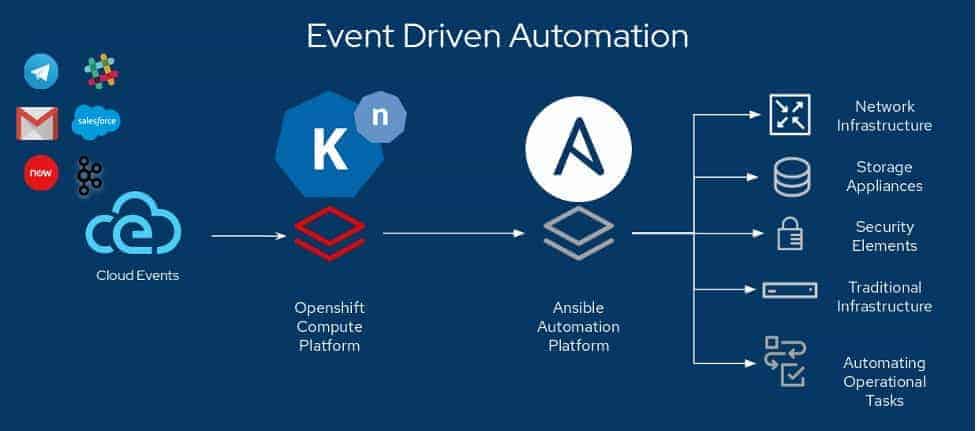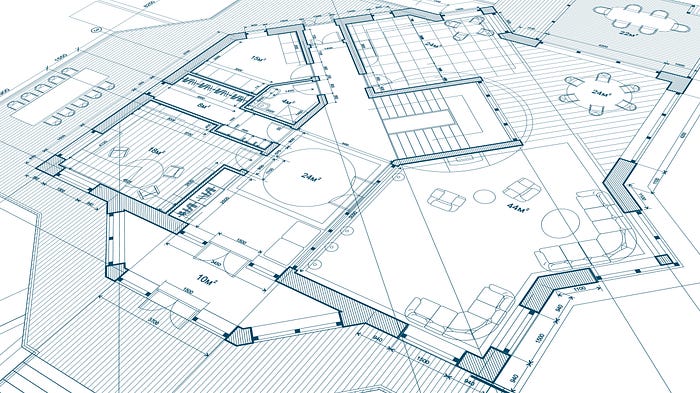To do in 2021: Get up to speed with quantum computing 101

For business leaders who are new to quantum computing, the overarching
question is whether to invest the time and effort required to develop a
quantum strategy, Savoie wrote in a recent column for Forbes. The business
advantages could be significant, but developing this expertise is expensive
and the ROI is still long term. Understanding early use cases for the
technology can inform this decision. Savoie said that one early use for
quantum computing is optimization problems, such as the classic traveling
salesman problem of trying to find the shortest route that connects multiple
cities. "Optimization problems hold enormous importance for finance, where
quantum can be used to model complex financial problems with millions of
variables, for instance to make stock market predictions and optimize
portfolios," he said. Savoie said that one of the most valuable applications
for quantum computing is to create synthetic data to fill gaps in data used to
train machine learning models. "For example, augmenting training data in this
way could improve the ability of machine learning models to detect rare
cancers or model rare events, such as pandemics," he said.
SmartKey And Chainlink To Collaborate In Govt-Approved Blockchain Project

Chainlink is the missing link in developing and delivering a virtually
limitless number of smart city integrations that combine SmartKey’s API and
blockchain-enabled hardware with real world data and systems to harness the
power of automated data-driven IoT applications with tangible value. The two
protocols are complementary: The SmartKey protocol manages access to different
physical devices across the Blockchain of Things (BoT) space (e.g. opening a
gate), while the Chainlink Network allows developers to connect SmartKey
functionalities with different sources of data (e.g. weather data, user web
apps). The integration focuses on connecting all the data and events sourced
and delivered by the Chainlink ecosystem to the SmartKey connector, which then
turns that data (commands issued by Ethereum smart contracts) into
instructions for IoT devices (e.g., active sensors GSM — GPS). Our connectors
can also deliver information to Chainlink oracles confirming these real world
instructions were carried out (e.g. gate was opened), potentially leading to
additional smart contract outputs. The confirmation of service delivery is a
“contract key” that connects both ecosystems into one “world” and relays an
Ethereum action to IoT devices.
DevOps + Serverless = Event Driven Automation

For the most part, Serverless is seen as Function as a Service (FaaS). While
it is definitely true that most Serverless code being implemented today is
FaaS, that’s not the destination, but the pitstop. The Serverless space is
still evolving. Let’s take a journey and explore how far Serverless has come,
and where it is going. Our industry started with what I call “Phase 1.0”, when
we just started talking or hearing about Serverless, and for the most part
just thought about it as Functions – small snippets of code running on demand
and for a short period of time. AWS Lambda made this paradigm very popular,
but it had its own limitations around execution time, protocols, and poor
local development experience. Since then, more people have realized that the
same serverless traits and benefits could be applied to microservices and
Linux containers. This leads us into what I’m calling the “Phase 1.5”. Some
solutions here completely abstract Kubernetes, delivering the serverless
experience through an abstraction layer that sits on top of it, like Knative.
By opening up Serverless to containers, users are not limited to function
runtimes and can now use any programming language they want.
Self-documenting Architecture

A self-documenting architecture would reduce the learning curve. It would
accentuate poor design choices and help us to make better ones. It would help
us to see the complexity we are adding to the big picture as we make changes
in the small and help us to keep complexity lower. And it would save us from
messy whiteboard diagrams that explain how one person incorrectly thinks the
system works . ... As software systems gradually evolve on a continual basis,
individual decisions may appear to make sense in isolation, but from a big
picture architectural perspective those changes may add unnecessary complexity
to the system. With a self-documenting architecture, everybody who makes
changes to the system can easily zoom out to the bigger picture and consider
the wider implications of their changes. One of the reasons I use the Bounded
Context Canvas is because it visualises all of the key design decisions for an
individual service. Problems with inconsistent naming, poorly-defined
boundaries, or highly-coupled public interfaces jump out at you. When these
decisions are made in isolation they seem OK, it is only when considered in
the bigger picture that the overall design appears sub-optimal.
Is graph technology the fuel that’s missing for data-based government?

Another government context for use of graphs is global smart city projects.
For instance, in Turku, Finland, graph databases are being deployed to
leverage IoT data to make better decisions about urban planning. According to
Jussi Vira, CEO of Turku City Data, the IT services company that is assisting
the city of Turku to achieve its ideas: “A lack of clear ways to bridge the
gap between data and business problems was inhibiting our ability to innovate
and generate value from data”. By deploying graphs, his team is able to
represent many real-world business problems as people, objects, locations and
events, and their interrelationships. Turku City Data found graphs represent
data in the same way in which business problems are described, so it was
easier to match relevant datasets to concrete business problems. Adopting
graph technology has enabled the city of Turku to deliver daily supplies to
elderly citizens who cannot leave their homes because of the Covid-19
pandemic. The service determines routes through the city that optimise
delivery speed and minimise transportation resources while maintaining
unbroken temperature-controlled shipping requirements for foodstuffs and
sensitive medication.
The Relationship Between Software Architecture And Business Models (and more)

A software architecture has to implement the domain concepts in order to
deliver the how of the business model. There are an unlimited number of ways
to model a business domain, however. It is not a deterministic, sequential
process. A large domain must be decomposed into software sub-systems. Where
should the boundaries be? Which responsibilities should live in each
sub-system? There are many choices to make and the arbiter is the business
model. A software architecture, therefore, is an opinionated model of the
business domain which is biased towards maximising the business model. When
software systems align poorly with the business domain, changes become harder
and the business model is less successful. When developers have to mentally
translate from business language to the words in code it takes longer and
mistakes are more likely. When new pieces of work always slice across-multiple
sub-systems, it takes longer to make changes and deploy them. It is,
therefore, fundamentally important to align the architecture and the domain as
well as possible.
In 2021, edge computing will hit an inflection point

Data center marketplaces will emerge as a new edge hosting option. When people
talk about the location of "the edge," their descriptions vary widely.
Regardless of your own definition, edge computing technology needs to sit as
close to "the action" as possible. It may be a factory floor, a hospital room,
or a North Sea oil rig. In some cases, it can be in a data center off premises
but still as close to the action as makes sense. This rules out many of the
big data centers run by cloud providers or co-location services that are close
to major population centers. If your enterprise is highly distributed, those
centers are too far. We see a promising new option emerging that unites
smaller, more local data centers in a cooperative marketplace model. New data
center aggregators such as Edgevana and Inflect allow you to think globally
and act locally, expanding your geographic technology footprint. They don't
necessarily replace public cloud, content delivery networks, or traditional
co-location services — in fact, they will likely enhance these services. These
marketplaces are nascent in 2020 but will become a viable model for edge
computing in 2021.
Why Security Awareness Training Should Be Backed by Security by Design
The concepts of "safe by design" or "secure by design" are well-established
psychological enablers of behavior. For example, regulators and technical
architects across the automobile and airlines industries prioritize safety
above all else. "This has to emanate across the entire ecosystem, from the
seatbelts in vehicles, to traffic lights, to stringent exams for drivers,"
says Daniel Norman, senior solutions analyst for ISF and author of the report.
"This ecosystem is designed in a way where an individual's ability to behave
insecurely is reduced, and if an unsafe behavior is performed, then the
impacts are minimized by robust controls." As he explains, these principles of
security by design can translate to cybersecurity in a number of ways,
including how applications, tools, policies, and procedures are all designed.
The goal is to provide every employee role "with an easy, efficient route
toward good behavior." This means sometimes changing the physical office
environment or the digital user interface (UI) environment. For example,
security by design to improve phishing susceptibility might include
implementing easy-to-use phishing reporting buttons within employee email
clients. Similarly, it might mean creating colorful pop-ups in email platforms
to remind users not to send confidential information.
Tech Should Enable Change, Not Drive It

Technology should remove friction and allow people to do their jobs, while
enabling speed and agility. This means ensuring a culture of connectivity
where there is trust, free-flowing ideation, and the ability to collaborate
seamlessly. Technology can also remove interpersonal friction, by helping to
build trust and transparency — for example, blockchain and analytics can help
make corporate records more trustworthy, permitting easy access for regulators
and auditors that may enhance trust inside and outside the organization. This
is important; one study found that transparency from management is directly
proportional to employee happiness. And happy employees are more productive
employees. Technology should also save employees time, freeing them up to take
advantage of opportunities for human engagement (or, in a pandemic scenario,
enabling virtual engagement), as well as allowing people to focus on
higher-value tasks. ... It’s vital that businesses recognize diversity and
inclusion as a moral and a business imperative, and act on it. Diversity can
boost creativity and innovation, improve brand reputation, increase employee
morale and retention, and lead to greater innovation and financial
performance.
Researchers bring deep learning to IoT devices
The customized nature of TinyNAS means it can generate compact neural networks
with the best possible performance for a given microcontroller – with no
unnecessary parameters. “Then we deliver the final, efficient model to the
microcontroller,” say Lin. To run that tiny neural network, a microcontroller
also needs a lean inference engine. A typical inference engine carries some dead
weight – instructions for tasks it may rarely run. The extra code poses no
problem for a laptop or smartphone, but it could easily overwhelm a
microcontroller. “It doesn’t have off-chip memory, and it doesn’t have a disk,”
says Han. “Everything put together is just one megabyte of flash, so we have to
really carefully manage such a small resource.” Cue TinyEngine. The researchers
developed their inference engine in conjunction with TinyNAS. TinyEngine
generates the essential code necessary to run TinyNAS’ customized neural
network. Any deadweight code is discarded, which cuts down on compile-time. “We
keep only what we need,” says Han. “And since we designed the neural network, we
know exactly what we need. That’s the advantage of system-algorithm
codesign.”
Quote for the day:
"Empowerment is the magic wand that turns a frog into a prince. Never estimate the power of the people, through true empowerment great leaders are born." -- Lama S. Bowen
No comments:
Post a Comment